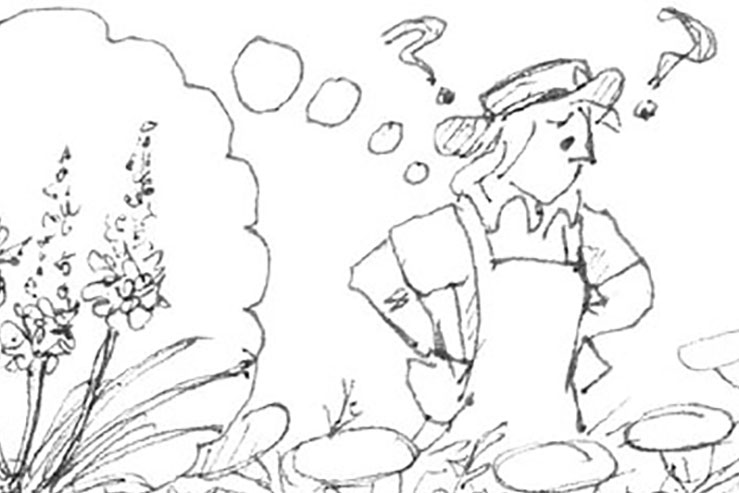
Oof, today’s story got me. Weeds in the garden aren’t usually a big deal to me, particularly the flowering ones, even if they offer up hay fever.
But the surprise crop at the end of this story is a flower that looks similar to Queen Anne’s lace, also known as wild carrot, but can put you into respiratory arrest from sniffing the flowers, especially children. I don’t have a lot of plant phobias, but finding this plant pop up in my garden is one of them!
Want a hint? This plant was used in ancient Greece to poison prisoners, and in fact, it’s what killed Socrates!
In today’s story, “Third Time? Not the Charm.” author Jan Spencer has been trying to grow Eremurus, or foxtail lily for years. And in year three she thinks it’s finally come through for her, but unfortunately, that’s just not the case. It turns out to be that unwelcome weed in the garden.
Not Just Weeds in the Garden
This story comes from our archive that spans over 30 years and includes more than 130 magazine issues of GreenPrints. Pieces like these that turn gardening mishaps into everyday life lessons always brighten up my day, and I hope this story does for you as well. Enjoy!

Third Time? Not the Charm.
By Jan Spencer

When I was just a beginning flower gardener, I got interested in Eremurus, or foxtail lily—so exotic and interesting and perfect for Zone 6, my growing zone here in Durango, CO. The delicate dry roots came with instructions to plant them three or four feet deep! Still a novice, I followed the directions. Of course, I never saw those plants again.
Years later, I saw that a new neighbor had gotten Eremurus to grow and sway prettily where I could see them from my front window. I tried again, only this time I planted them three or four inches deep. Still no luck.
I tried a third time, in the bed by my front window. Hey—a new plant emerged! Eremurus at last?
It looked like a carrot and smelled odd. Queen Anne’s lace? I looked it up: Conium maculaturm. Poison hemlock! It grew large, had delicate white flowers that lasted a long time, and attracted a wide array of insects and birds. A winner?
Yes, if you overlook the fact that it’s invasive and that every part of the plant is toxic to mammals (it’s the hemlock that was used to kill Socrates).
Should I try for Eremurus again? Who knows? Maybe the fourth time will be the charm! ❖
By Jan Spencer, published originally in 2021, in GreenPrints Issue #127. Illustrated by Marilynne Roach

Did this remind you of a similar gardening mishap you’d like to share? Leave a comment below, I’d love to hear it.



